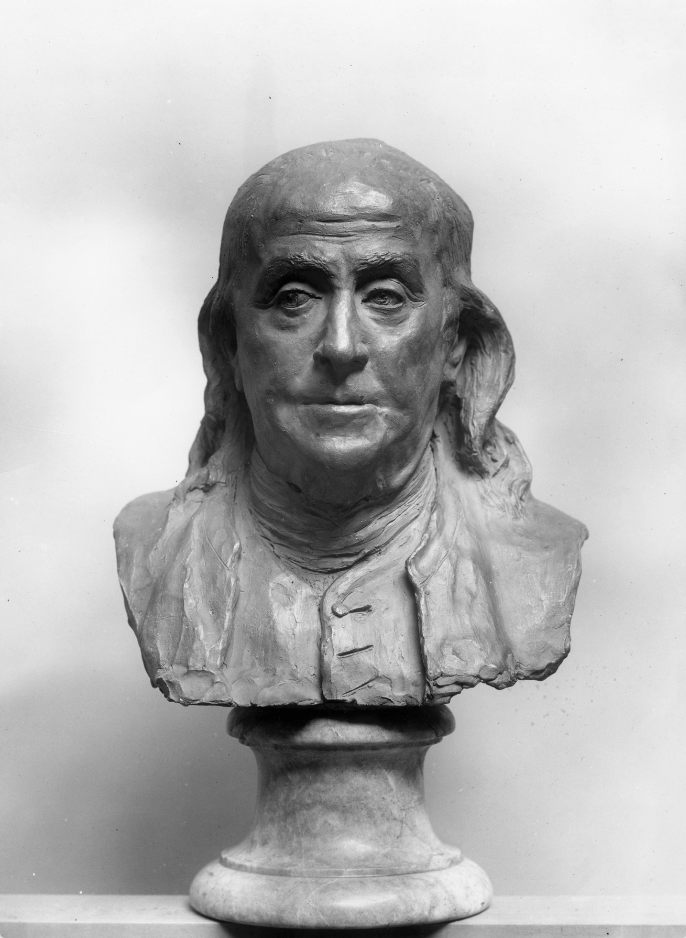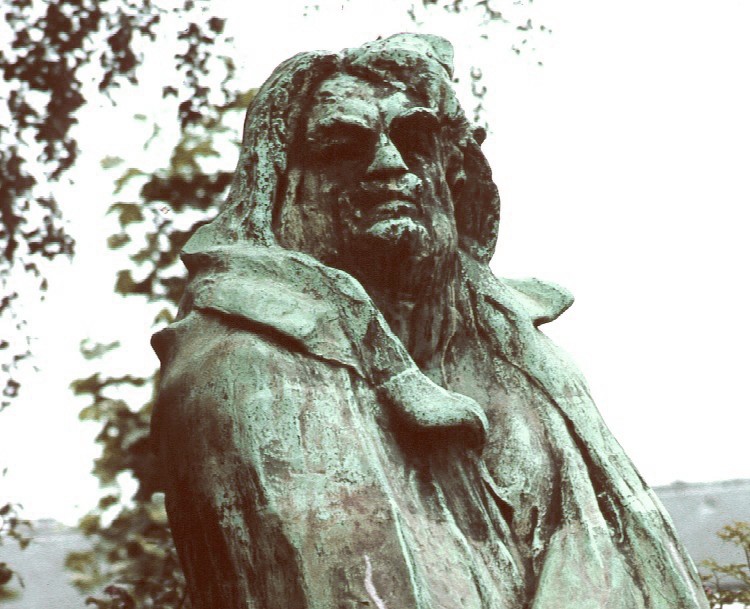Antoine Houdon’s Bust of Benjamin Franklin was created in the late 18th century out of terracotta and marble. It is 21 inches tall.
In 1898 Rodin presented his 9 foot tall plaster Balzac. [1]
Rodin sculpted in a way with more empty space, while Houdon sculpted Benjamin Franklin in a more realistic, filled out manner. Rodin’s sculpture style is more imaginative and does not precisely imitate the appearance the actual person portrayed looked to the eye. The imaginative quality of Balzac is what makes it modern. A formal quality of Balzac is the empty space in his face.
I did not read about the Benjamin Franklin piece, but I speculate that the story behind the work is that Benjamin Franklin was a thinker during the time of the American revolution. This piece shows Franklin’s thoughtfulness by having his eyes gaze towards the side, and by having his brow wrinkled a bit, as if he was in thought in response to something that one of his compatriots was thinking about doing.
Rodin chose to give a number of unique formal qualities to his sculpture of Balzac. Balzac’s face has an emptiness in his left eye. Instead of a cheek and eye, there is empty space. The material Rodin used gives Balzac a look of weight and heaviness. In the shapes of Balzac’s shoulders, hair, and neck, there is a saggy melt. These features appear to be melting because of the smooth lines in these features. The sculpture is also very large, at 9 feet tall.
I think Rodin made these formal choices for various reasons. The tallness portrays the sense that someone may feel when comparing themself to Balzac: very small. When standing next to this statue, someone may feel small. The heaviness of the material gives the sense to the viewer that Balzac was a heavy, depressive person. The melting quality conveys the idea that Balzac was fading over time. The empty space where Balzac’s eye can make the viewer wonder about whether or not something about Balzac’s vision was missing, or whether he saw things that were invisible. Rodin made empty space, tallness, and melting appearance so that the viewers would have a wide variety of meanings they might attach to the sculpture, but I think Rodin did not make these formal choices in order to convey a particular message to his audience, but rather to create a wide variety of interpretations and responses to his work.
I interpret the empty space in Balzac’s face to convey the eye Balzac had for the invisible. Balzac saw and wrote about more than what was materially evident, but also about what was spiritual, invisible, or hidden to many peoples’ views.
I wrote this comparison for a Gordon College course, Modern Art Seminar. Find the syllabus for the course below.

